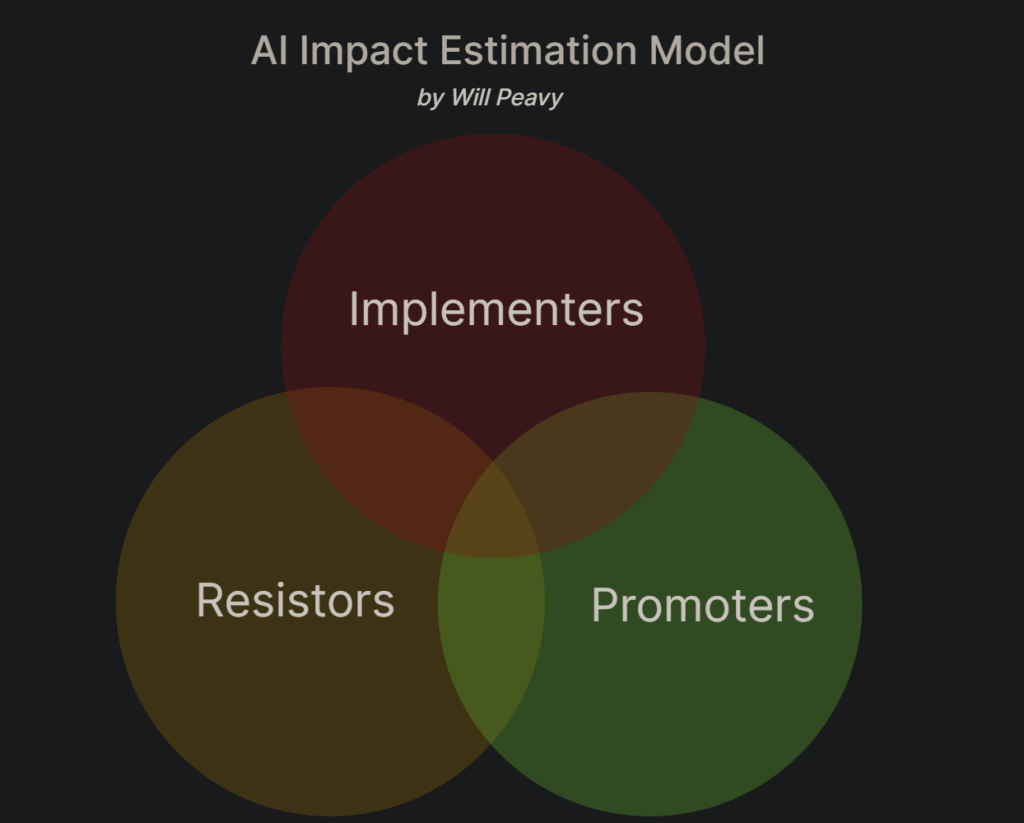Although it’s impossible to predict the future with certainty, we can estimate what may happen over the next few years based on information currently available. A method for doing so involves looking at the overlap in viewpoints from interested parties, specifically:
- Promoters: These are people that wish to see the development and use of AI advance, either due to a vested interest (for example a profit motive), or because of an idealistic view of its potential.
- Resistors: These are people that oppose the advancement or implementation of AI, either due to a vested interest (for example, it may cause them financial harm), or because of a negative view of AI’s potential impact.
- Implementers: These are the engineers and technicians that develop or work with AI tools.

Resistors say that AI will replace jobs, and this is a negative because unemployment will rise. Promoters say that AI will replace jobs, and this is positive because it will allow companies to reduce operating costs. While the two groups disagree over whether AI replacing jobs is a good thing, they agree that AI will replace jobs – and therefore we have an overlap of viewpoints.
If we then look at Implementers, for example, at software developers that have been using AI in the process of creating software – many will say that they say AI tends to generate bloated, insecure code. But many of these same developers will note that if used wisely, AI tools can aid productivity (for example, it can help with identifying patterns in datasets, generating simple scripts, or reviewing code for standards compliance). Due these observations, many Implementers say that AI may replace some parts of more complex jobs, and may replace some simpler jobs, but isn’t yet capable of replacing as many jobs as either Resistors or Promoters tend to claim.
And so we have an overlap of all three viewpoints in the center; which includes the concept that AI will replace some parts of complex jobs (and some simpler jobs) – and this central overlap is the outcome that is most likely to occur in the next few years.
This AI Impact Estimation Model can be further applied to any claim regarding the future of AI, by the following method:
- For any claim, identify the viewpoints of Promoters, Resistors, and Implementers.
- Look for overlap among the claims of each viewpoint.
- The central overlap area is the best estimate of what will occur in next few years.